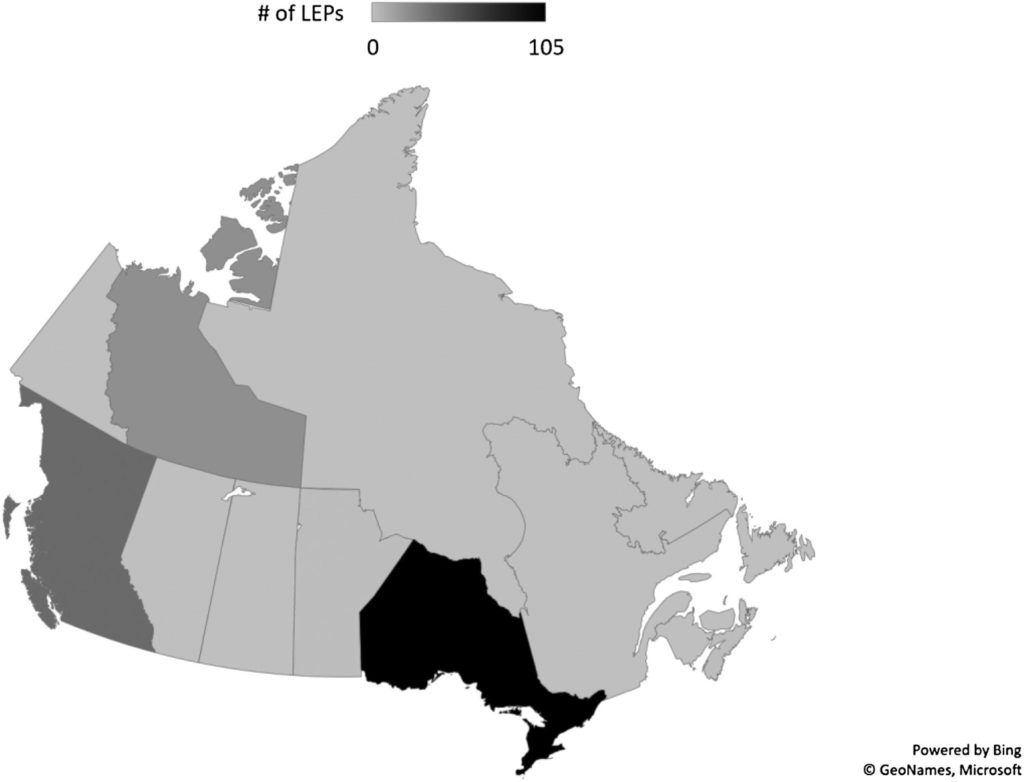Novel research from the Faculty of Environmental and Urban Change considers sustainable energy through a community lens, underscoring the value of participation of local members through ownership and control of energy.
PhD Candidate Susan Morrissey Wyse and her supervisor Professor Christina E. Hoicka, in the Faculty of Environmental and Urban Change, published a research paper that considered Local Energy Plans (LEPs) from a community perspective – that is, in a way that emphasized participation of local community members through ownership and control of energy. This is referred to as Community Energy or CE.

The two determined that LEPs are relevant to CE, and they represent a promising avenue for pursuing CE objectives. These objectives can be achieved by emphasizing the three components of CE – community participation, capacity and ownership – throughout LEP processes and actions. This highly original research has interwoven democracy and justice with sustainable energy transitions.
This research, conducted in the social exergy + energy lab, funded by the Social Sciences and Humanities Research Council of Canada and a Canada Graduate Scholarship, as well as the PowerStream Chair at York, was published in Local Environment: The International Journal of Justice and Sustainability (2019).
Community energy holds promise for greener energy and local benefits
The drive to contribute to a greener planet and address climate change has galvanized and compelled the research world for decades. Many scientists and academics on this quest believe that CE has great potential in two different ways: it could be an opportunity to transition to low-carbon energy systems; and, a chance to create additional benefits for local communities.

“There’s a trend for local communities, for example, municipalities, to create their own Local Energy Plans – a planning process that articulates energy-related actions, i.e. expected outcomes. The trend has seen considerable growth in many countries over the last decade,” explains Wyse, whose research with Hoicka is focused on the social impacts of energy, and how communities participate in and benefit from local low-carbon energy initiatives.
They say that while CE and LEPs both address energy activities in a local context, any further connection between these trends remains unclear. That’s why Wyse and Hoicka’s research, on assessing the connection between local energy plans and community energy, is so important.
Researchers undertook literature review, then analyzed 77 LEPs

The researchers’ first step was to undertake a comprehensive literature review to group all research in CE and LEP together and take a fulsome look at it, collectively, to spot trends and key understandings. Their ultimate goal was to develop a framework to assess LEPs for their relevance to CE.
They analyzed 77 LEPs from across Canada for the ways in which they address the three components that define CE: community participation, community ownership and community capacity.
The questions that the researchers focused on pertained to actions around the following areas:
- Low-carbon energy projects, which raised the issue of renewable energy, for example.
- Models of CE ownership – here, the most common models for CE ownership discussed were renewable energy projects for community-owned buildings and local ownership of projects through the establishment of a local energy co-operative, where community members would be able to purchase shares.
- Financial support of local ownership, to which participants responded with Revitalization Tax Exemption bylaws and financial incentives.
- Use of local assets and local ownership of assets, which raised the topics of boosting local employment and the use of local goods and materials.
- Local skills development and education related to energy systems, perception of new systems and/or behavioural change, which elicited responses about local public and youth education efforts and new/enhanced post-secondary education opportunities.
Key findings indicate this may be important new avenue to pursue
The key findings are that LEPs have emerged as a process that is both relevant to CE and capable of strategically addressing its components.

“Despite this, LEPs do not appear to reveal a radically different approach to the ‘closed and institutional’ models of traditional community involvement practices. This suggests that for CE advocates, LEPs may be considered to be an important avenue to pursue CE ambitions. LEPs could increase their relevance to CE by improving the processes and actions related to all three CE components,” says Hoicka.
Their research emphasizes that advocacy for supportive policies across multiple levels of governance remains critical, given that 99 per cent of LEPs occur in jurisdictions with provincial or territorial government programs supporting their development, and that most regulations and programs are enabled by governments at higher levels.
To read the article, “By and for local people: assessing the connection between local energy plans and community energy,” visit the journal’s website. To learn more about Hoicka and the social exergy + energy lab, see the lab’s webpage.
To learn more about Research & Innovation at York, follow us at @YUResearch; watch our new video, which profiles current research strengths and areas of opportunity, such as Artificial Intelligence and Indigenous futurities; and see the snapshot infographic, a glimpse of the year’s successes.
By Megan Mueller, senior manager, Research Communications, Office of the Vice-President Research & Innovation, York University, muellerm@yorku.ca
